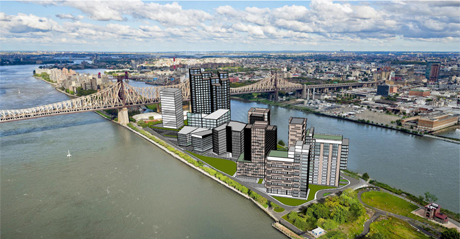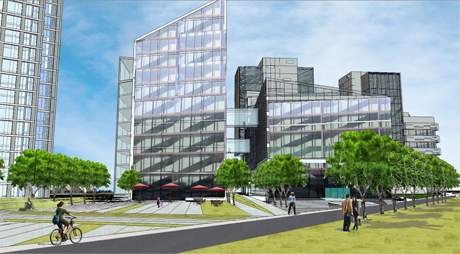Students offer design suggestions for tech campus
By Stacey Shackford


Input from the Class of 2012 landscape architecture students just might leave a mark on the designs of the new CornellNYC Tech -- Home of the Technion-Cornell Innovation Institute, on Roosevelt Island in New York City.
Not only are the 42 members of the Capstone Studio class drafting designs for the exterior space of the eight- to 10-acre site, but they also have teamed up with their peers in Cornell's Baker Program in Real Estate to weigh in on all aspects of its built environment, from academic spaces and business incubator labs, to hotel, housing and a conference center.
By the end of the semester, each of the six interdisciplinary teams will have undergone their own market analysis and costing exercises based on site visits. They will have assessed transportation and utilities, and interviewed with community residents and other stakeholders. Their project will culminate in a presentation to administrators and University Architect Gilbert Delgado.
Department of Landscape Architecture Chair Peter Trowbridge said the project presents a great opportunity for students to situate issues of the built environment, both pedagogically and demonstrably, in a real-time project.
"They get to conduct research about environmental engineering and then physically create an environment that it is situated within a master plan," Trowbridge said. "They won't be focusing on just the interior or exterior, but the entire campus together, like a living machine. It will be fantastic to create that kind of showcase in New York City."
Trowbridge said it is an ambitious and complex project, especially since Goldwater Hospital still occupies the site, but he is confident his students are well equipped to handle it, and they are excited to do so.
"There's nothing like having the reality and the consequences of what you do be meaningful," Trowbridge added. "It's helped with the momentum of the class, because they see the real value in what they are doing."
He hopes such contributions from students and faculty will continue as the city campus grows. The site's development timeline extends 25 years, with 300,000 square feet built by 2017 and more than 2 million square feet by 2037. The vision of the campus includes a "hub" concept, with initial focus areas in connective media, healthier life and built environment.
"I see the built environment as an area where we can provide a lot of proofs of concept and help take those ideas to create tangible demonstrations," Trowbridge said.
Stacey Shackford is a staff writer at the College of Agriculture and Life Sciences.
Media Contact
Get Cornell news delivered right to your inbox.
Subscribe